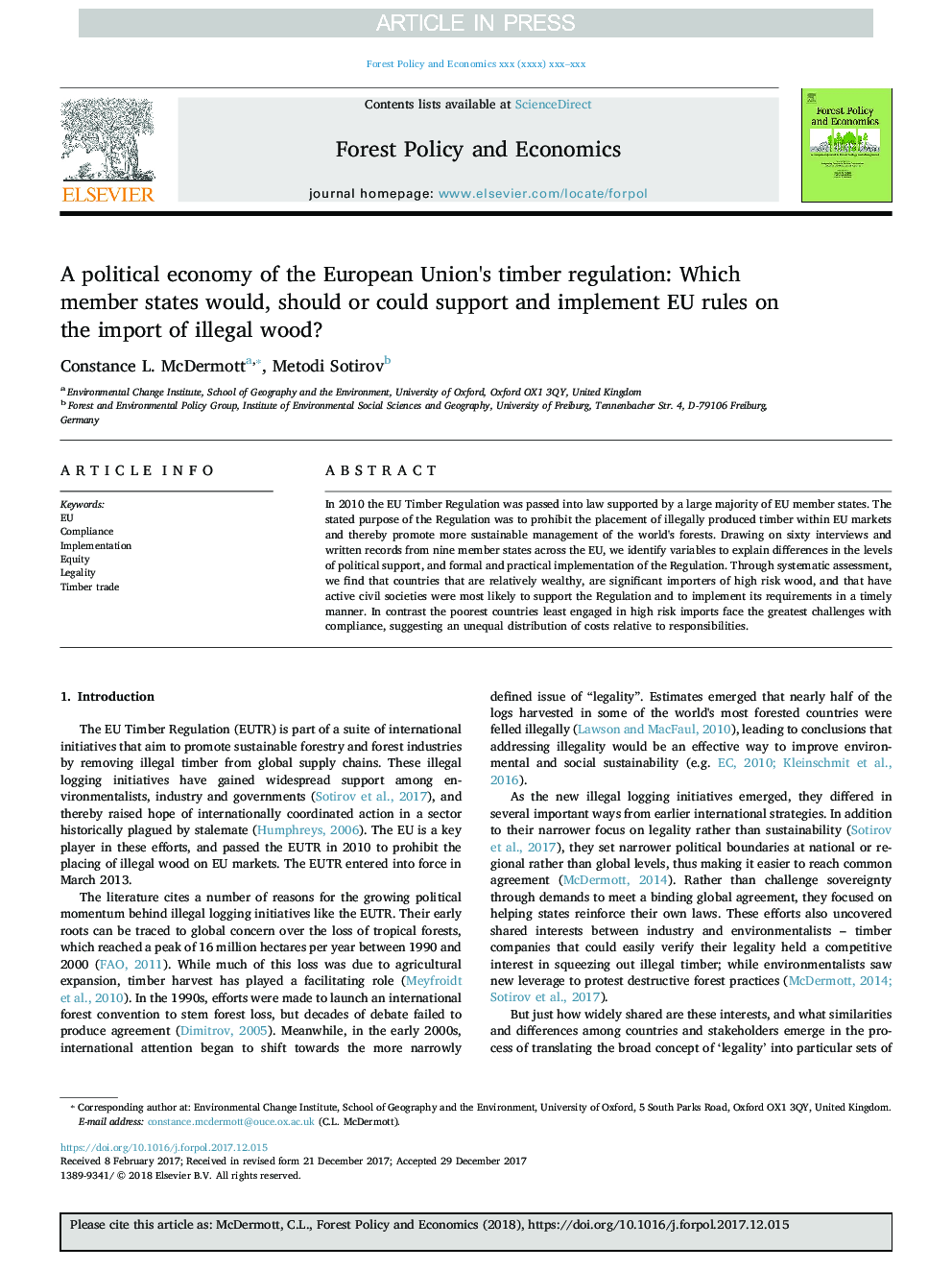| Article ID | Journal | Published Year | Pages | File Type |
|---|---|---|---|---|
| 6544783 | Forest Policy and Economics | 2018 | 11 Pages |
Abstract
In 2010 the EU Timber Regulation was passed into law supported by a large majority of EU member states. The stated purpose of the Regulation was to prohibit the placement of illegally produced timber within EU markets and thereby promote more sustainable management of the world's forests. Drawing on sixty interviews and written records from nine member states across the EU, we identify variables to explain differences in the levels of political support, and formal and practical implementation of the Regulation. Through systematic assessment, we find that countries that are relatively wealthy, are significant importers of high risk wood, and that have active civil societies were most likely to support the Regulation and to implement its requirements in a timely manner. In contrast the poorest countries least engaged in high risk imports face the greatest challenges with compliance, suggesting an unequal distribution of costs relative to responsibilities.
Related Topics
Life Sciences
Agricultural and Biological Sciences
Forestry
Authors
Constance L. McDermott, Metodi Sotirov,
